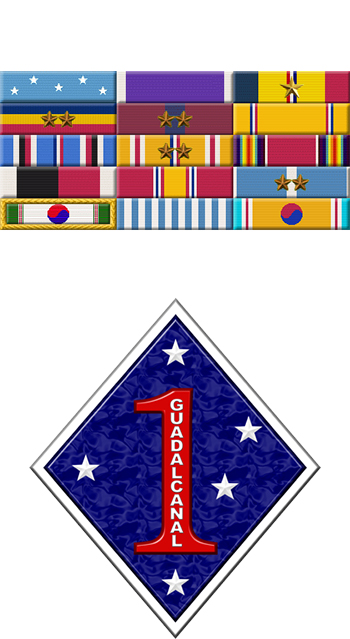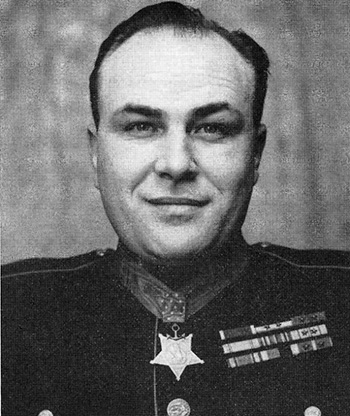
|
Robert S. Kennemore |
 |
|||
| Rank, Service | ||||
Tech Sergeant E-6, U.S. Marine Corps |
||||
| Veteran of: | ||||
|
||||
| Tribute: | ||||
Robert Kennemore was born on June 21, 1920, in Greenville, South Carolina. He enlisted in the U.S. Marine Corps on June 20, 1940, and completed basic training at MCRD San Diego, California, in August 1940. PFC Kennemore served with Company H, 2nd Battalion of the 6th Marine Regiment at Camp Elliott, California, from August to October 1940, and then with Company M, 3rd Battalion of the 6th Marine Regiment at Camp Elliott from November to December 1940. His next assignment was with the 2nd Antiaircraft Machine Gun Battery (redesignated Battery A, 2nd Special Weapons Battalion on May 1, 1941) from January to May 1942. Cpl Kennemore served with Battery A, 2nd Special Weapons Battalion of the 2nd Marine Division during the Battle of Guadalcanal from August 1942 to February 1943, and then returned to Camp Elliott in June 1943. He served with the Antiaircraft Battery, Artillery Battalion Training Center (redesignated 90mm Antiaircraft Group, Base Artillery Battalion Training Center on January 1, 1944) at Camp Lejeune, North Carolina, from August 1943 to March 1944, and then at Marine Barracks, Camp Pendleton, California, from March to September 1944. Sgt Kennemore's next assignment was at the Marine Barracks in Klamath Falls, Oregon, from September 1944 to February 1945, followed by service with the Marine Barracks, Naval Air Station Key West, Florida, from March to May 1945. He served with the Replacement Company at Camp Lejeune from May to July 1945, and then deployed to the Pacific Theater aboard the vehicle landing ship USS Saugus (LSV-4) from July to August 1945. Platoon Sergeant Kennemore joined 2nd Battalion, 27th Marine Regiment, in August 1945, and served on Occupation Duty in Japan with that unit from September to December 1945. He joined 2nd Battalion of the 6th Marine Regiment in December 1945, and continued on Occupation Duty in Japan from December 1945 to April 1946. His next assignment was with the Guard Battalion at MCB San Diego, California, from April to July 1946, and then at Marine Barracks, New Orleans, Louisiana, from July to September 1946. Staff Sergeant Kennemore served with the Marine Barracks at the Naval Mine Depot in Yorktown, Virginia, from September 1946 to September 1947. He served with Headquarters, 3rd Marine Corps Reserve District in New York City from September 1947 to October 1949, and he then served with A Company, 1st Battalion of the 6th Marine Regiment at Camp Lejeune, North Carolina, from October 1949 to May 1950. SSgt Kennemore joined E Company, 2nd Battalion, 6th Marine Regiment of the 2nd Marine Division at Camp Lejeune in May 1950, and deployed with his unit to Korea in July 1950. E Company, 2nd Battalion, was transfered to the 7th Marine Regiment of the 1st Marine Division in Korea in August 1950, and SSgt Kennemore was badly wounded during a battle on November 27-18, 1950, for which he would later be awarded the Medal of Honor. He was evacuated to the United States in December 1950, and spent the next 10 months at the U.S. Naval Hospital in Oakland, California. Promoted to Tech Sergeant in July 1951, he was medically retired from the Marine Corps on November 1, 1951. He was presented the Medal of Honor by President Harry S. Truman at the White House on November 24, 1952. Robert Kennemore died on April 26, 1989, and was buried at the San Francisco National Cemetery in San Francisco, California. |
||||
|
||||

